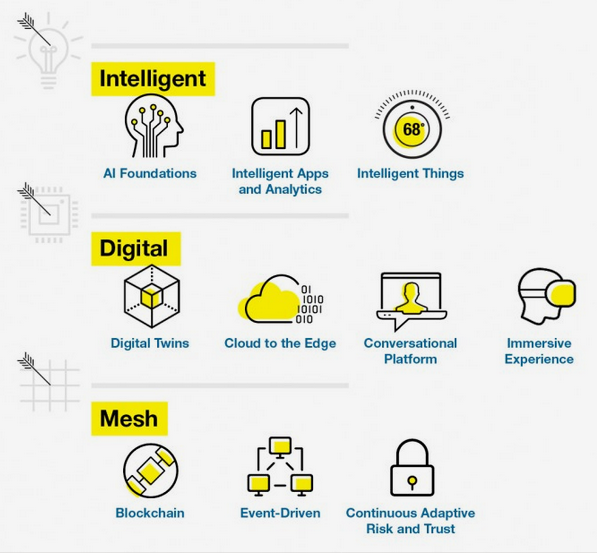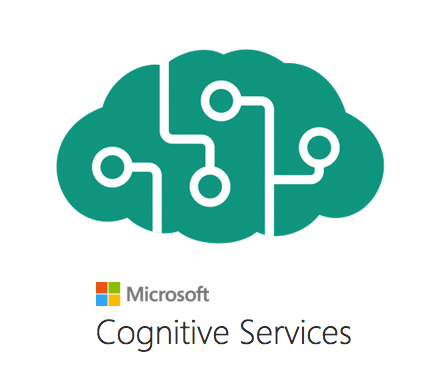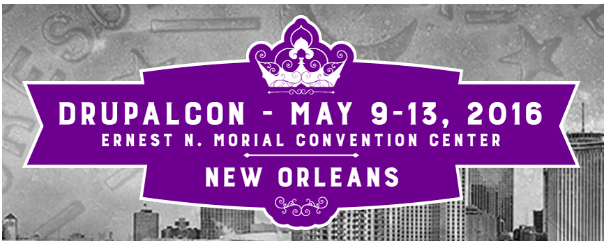“Great Scott!”, exclaims the scientist in the renowned science fiction trilogy ‘Back to the Future’ which hit the cinema screens in 1985. This exclamation by the scientist, who travels 30 years into the future in his flying car, is suggestive of remarkable inventions by the homo sapiens which is a colossal conundrum to solve in the present world set in this motion picture.

Drupal has been revolutionising the web application development with its flexibility in integrating with futuristic technologies
Since the first ever website, invented by British Scientist Tim Berners-Lee, went live in 1990, the tech enthusiasts have been looking at the enormous technological advancements in the years that followed. In a similar fashion, Drupal has been revolutionising the web application development with its flexibility in integrating with futuristic technologies.
What is Drupal doing with the futuristic technologies to give you the “Great Scott!” moment?
Futuristic Technologies: Strategic Trends with Broad Industry Impact
As stated by Gartner, an intertwining of people, devices, content, and services is known as an intelligent digital mesh. Digital firms are supported by enabling digital models, business platforms, and a rich, intelligent collection of services.
Intelligent: With AI seeping into virtually every other technology, well-defined focus can allow more dynamic autonomous systems.
Digital: Amalgamating the virtual and real worlds in order to create an immersive environment.
Mesh: The connections between a growing set of people, business, services, devices, and content for delivering digital outcomes.

Intelligent digital mesh is the intertwining of people, devices, content and services
Immersive experiences, digital twins, Artificial Intelligence, conversational platforms, Blockchain, continuous adaptive security among others, as depicted in the illustration above, form a foundation for the next generation of digital business models and ecosystems.
Beyond Websites: Integration of Future Technologies and Drupal
Drupal is among the front-runners when it comes to content-heavy websites. With new discoveries happening outside of Drupal, it is only better to leverage the benefit of Drupal’s flexibility to incorporate next-generation technologies.
Artificial Intelligence
An area of computer science which stresses on the creation of intelligent machines that can work and act like humans, Artificial Intelligence has been the talk of the town ever since it burst onto the scene. How can it be leveraged for your Drupal websites?
Chatbots
There have been several phases in the way humans interacted with the computers. First was the Terminal Interface which involved the use of command line or DOS prompt. The second phase was the Graphical Interface which used visual representations of programs, files, and actions. The third wave is the Conversational Interface which allows users to interact with the computers using a natural language.
Chatbots, powered by artificial intelligence technologies, are wonderful for your website as they offer conversational UI and can hugely benefit your enterprise. Drupal offers a useful set of modules that can help in the integration of chatbots in the website thereby providing a conversational interface to the users.
Facebook Messenger Bot module, created by The White House, gives you the tool for developing chatbot on a Facebook Messenger Platform.
Chatbot API, another Drupal module, can be used to incorporate a bot in the site. It is an additional layer that falls between your Drupal installation, your Natural Language Processing (NLP) and your various chatbots and personal assistants. It can work with systems like Dialogflow, Alexa, Cisco Spark Microsoft and Twilio.
Digital voice assistants
While chatbots are primarily a text-based medium, digital voice assistants can be more human-like with the ability to talk like a human. For instance, Google Duplex, the latest entrant in the scene of digital voice assistants, can provide lifelike conversation thereby having a human-like chat and booking hotels on your behalf.

Alexa, an integration module for Amazon Echo services, allows Drupal to respond to Alexa Skills Kit requests. The demonstration given below shows that by indulging in a casual interaction with Alexa, the shopper is able to preheat the oven, add the ingredients and cook the food without even looking at the phone or laptop.
When the shopper provides a verbal query, this input is converted into a text-based request which is then sent to the Freshland Market Drupal 8 website (a fictional grocery store). From there, a coupling of custom code and Alexa module respond to the Amazon Echo with the requested information.
Cognitive Search
Forrester, research, and advisory firm, defines cognitive search and knowledge discovery as “the new generation of enterprise search solutions that employ Artificial Intelligence (AI) technologies such as Natural Language Processing (NLP) and Machine Learning to ingest, understand, organize, and query digital content from multiple data sources”.

Azure Cognitive Services API module allows Drupal to leverage the benefits of Microsoft Azure Cognitive Services. It helps in exposing machine learning APIs and allows developers to incorporate intelligent features like detecting emotion and video, understanding speech and language, and recognising face, speech, and vision.
Augmented Reality
Gartner defines Augmented Reality as the real-time use of information in the form of text, graphics, audio and other virtual enhancements integrated with real-world objects. It is this “real world” element that differentiates AR from virtual reality. AR integrates and adds value to the user’s interaction with the real world, versus a simulation.
A Drupal agency developed a chatbot prototype which helped customers to choose recipes based on the health constraints and their preferences. Chatbot provided an interactive experience to the users which helped in avoiding intensive research for the grocery shopping. By integrating AR in Drupal, they tried to take it one notch higher.
The demo in the video displays a shopper interacting with the AR application. Freshland Market’s mobile application (fictional grocery store), which is built on Drupal 8, guides the shopper to make better decisions while shopping through AR overlays.
It superimposed relevant data like product ratings, price and recommendations over the product items detected by the smartphone camera. By showing the products that are best for her diet plan, the mobile application personalised the shopper’s experience.
Drupal’s web services support and JSON API module assisted in providing content to the mobile application. The Drupal 8 site of Freshland Market stored all the product-related information. So, if the Drupal content for any of the product items is edited to display the item being on sale, it automatically reflected in the content that is superimposed through the mobile application. Furthermore, the location of the product was stored on the site which guided the shopper to the product’s location in the store.
Another use case is the Lift HoloDeck prototype which was developed using commercially available technologies - Drupal (content store), Acquia Lift (web personalisation service), Vuforia (AR library) and Unity (3D game engine).
Lift HoloDeck team developed a mobile application that superimposes product data and smart notifications over physical objects that are detected on the smartphone’s screen.
Consider a situation where a user informs about his purchases to a coffee shop through his mobile application. Entering a shop, he would show his phone screen displaying “deal of the day”. The application superimposes diet plan, directions on how to order, and product data on top of the beverage. By glancing at the nutritional information, he would order his preferred choice and would get a notification stating that his order is ready to picked up.
Virtual Reality
Virtual reality is basically computer-generated environments or realities that can be used to simulate a physical world in a specific environment to make it feel real.
Virtual reality can be used to build cross-channel experiences. The demonstration shown in the video below features a student who is eager to explore more about Massachusetts State University (a fictional university). The video depicts that he is able to take a virtual tour directly from the university’s website sitting on his sofa.
Placing his phone in a VR headset, he can go around the university campus, explore buildings, and look at the program resources, photos and videos within the context of the virtual tour.
The Massachusetts State University’s Drupal site stores all of the content and media that is featured in the virtual tour. Drupal backend helps website administrators to upload media and position hotspots directly. Using JSON API, the React frontend pulls in information from Drupal.
Internet of Things
In the broadest sense, the term Internet of Things (IoT) subsumes everything that is connected to the internet but it is increasingly being used to define objects that can talk to each other. The IoT can be anything ranging from simple sensors to smartphones and wearables connected together. Combining these connected devices with automated systems can help in gathering information, review it and create an action plan to assist someone with a particular task or learn from a process.
DrupalCon New Orleans 2016 had a session which delved around bringing Drupal and internet of things together. It exhibited a demonstration that used a barometric pressure sensing, GPS-enabled wearable armband connected to the internet which could, then, display an icon to provide the weather forecast of the current location.

The armband, which was tethered to iPhone, sent latitudinal and longitudinal data to a ThingSpeak channel (an API for the IoT) using mobile data. It, in turn, tracked the location of a ship by sending this data over HTTP to the Drupal 8 website. When the site received this authenticated POST data, new location nodes were created. It updated the map and table that is built with Views and changed a block on the sidebar to display the matching icon of weather in the current location of the ship.
Blockchain
Don & Alex Tapscott, authors of Blockchain Revolution (2016) define the blockchain as “an incorruptible digital ledger of economic transactions that can be programmed to record not just financial transactions but virtually everything of value.”
Chainfrog has been working on blockchain technology since its early stages and devised a use case where the user data including communication history, address and the profile data will be available to everyone in a large organisation.
“Blockchain is an incorruptible digital ledger of economic transactions that can be programmed to record not just financial transactions but virtually everything of value.”
To synchronise and securely segregate Drupal user data, big companies map user registration forms with a centralised company API. These big companies usually have more than one Drupal installations for different departments within the enterprise with a central codebase.
Thus, instead of having an expensive API layer, Chainfrog proposed using Drupal 8 custom module via a distributed ledger for the synchronisation of user data. So, instead of making an HTTP call everytime a new user is added, they planned to adopt a peer-to-peer immutable ledger thereby removing the middleman, in this case, API.
Blockbinder, a product of Chainfrog that helps in connecting existing databases instantly, would keep a tab on user records in a data table whenever a new user is added to the Drupal system. Within 30 seconds of any new addition in one of the Drupal installations, all the installations would synchronise the user data.
At DrupalCon Nashville 2018, we propounded possible use cases for the coming together of Drupal and Interplanetary File System (IPFS). IPFS, which has its working principle based on blockchain technology, is a peer-to-peer hypermedia protocol. Centralisation is at the core of Drupal’s workflow in comparison to IPFS’ decentralised nature. We looked for ways to make them work together.
Drupal, which allows content editors to seamlessly produce content, can be entwined with IPFS for an amazing digital experience. From helping archivists to store superabundance of data to helping Service Providers as a global Content Delivery Network (CDN), there are tons of benefits. We presented a use case to make this a reality which can be explored in this video.
Conclusion
These are some of the frontiers that Drupal has crossed. There are lots of emerging technologies whose potential with Drupal can be explored like..?
Future is bright with lots of new inventions happening in the technological fields to make the world a better space. Digital firms can make significant strides in their online presence by integrating future technologies with their website. Drupal gives a great platform for the businesses to look beyond websites and incorporate emerging technologies to build futuristic websites
Want to know how we develop Drupal sites for our clients and also maintain and support them? Ping us at [email protected] to set the ball rolling and make your website exciting with the incorporation of emerging technologies.
Subscribe
Related Blogs
Inside the Drupal AI Summit: Themes, Speaker and What To Expect

“ The web is changing fast, and AI is rewriting the rules. It writes content, builds pages, and answers questions directly,…
FOST and Drupal AI Initiative: Next Era of Responsible AI

Three years after the launch of generative AI tools marked a new age for artificial intelligence, almost 90% of survey…
Drupal AI Ecosystem Part 5: AI Content Suggestions

Drupal has steadily evolved from being just a content management system into a flexible platform that incorporates emerging…




